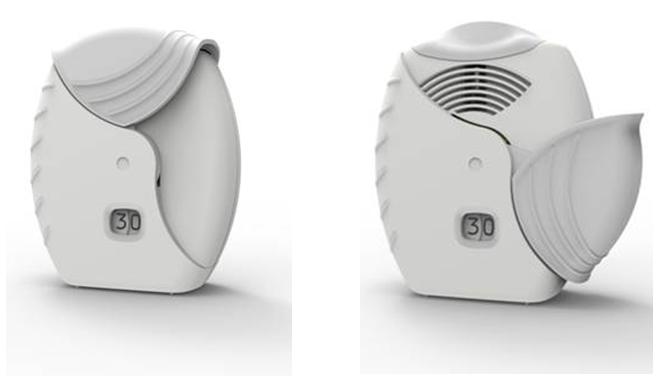Exploring Umeclidinium: Uses, Benefits, and Side Effects
Umeclidinium is a medication that plays a crucial role in promoting respiratory health and managing certain respiratory conditions. Its mechanism of action makes it a valuable option for individuals seeking effective relief from breathing difficulties and related symptoms.

Medical Uses of Umeclidinium
Umeclidinium is primarily utilized for the management of chronic obstructive pulmonary disease (COPD), a progressive respiratory condition that can significantly impact lung function and overall well-being. Additionally, Umeclidinium is employed in the treatment of asthma, offering a potential solution for those living with this chronic respiratory disorder.
For individuals with COPD, Umeclidinium can contribute to the improvement of lung function and breathing. It is often prescribed as part of combination therapies, where its synergistic effects with other medications can enhance its efficacy. Dosage recommendations may vary based on individual needs and the severity of the condition.
Benefits and Advantages
The administration of Umeclidinium brings forth several benefits and advantages for individuals struggling with respiratory issues. One of the key advantages is the enhancement of lung function, allowing for better airflow and improved breathing capacity. This improvement can lead to a reduction in symptoms such as shortness of breath, wheezing, and coughing.
Comparing Umeclidinium with Other Treatment Options
When considering Umeclidinium as a treatment option for respiratory conditions, it’s important to explore how it compares to other medications and therapies available. Umeclidinium is often used in combination with other bronchodilators, such as long-acting beta-agonists (LABAs), to maximize its benefits.
Unlike some medications, Umeclidinium is a long-acting muscarinic antagonist (LAMA), which means it works by relaxing the muscles around the airways and allowing for improved airflow. This targeted mechanism of action sets it apart from other treatments, making it a valuable addition to the array of options available for respiratory management.
Managing Potential Side Effects
As with any medication, Umeclidinium may come with potential side effects. While many individuals tolerate it well, it’s important to be aware of possible reactions. Common side effects can include dry mouth, headache, and respiratory tract infections. These side effects are generally mild and temporary, but it’s advisable to discuss any concerns with a healthcare professional.
If you experience severe side effects or allergic reactions such as rash, itching, swelling, or difficulty breathing, seek medical attention promptly. Your healthcare provider can offer guidance on managing side effects and determining if Umeclidinium is the right choice for you.
Safety Precautions and Considerations
Before beginning Umeclidinium treatment, it’s crucial to inform your healthcare provider about your medical history, including any allergies, existing conditions, and current medications. This information will help your doctor make an informed decision about whether Umeclidinium is safe for you.
Umeclidinium is typically not recommended for individuals with a history of hypersensitivity to its components. Pregnant or breastfeeding individuals should also consult their healthcare provider before starting Umeclidinium, as its effects during these periods are not fully understood.
User Experiences and Testimonials
Many individuals have reported positive experiences with Umeclidinium, highlighting its effectiveness in improving breathing and reducing symptoms of respiratory conditions. However, each person’s experience can vary, and it’s important to consult with a healthcare professional to determine the best course of treatment for your unique needs.
Frequently Asked Questions (FAQs) About Umeclidinium
1. What is Umeclidinium used for?
Umeclidinium is used to treat chronic obstructive pulmonary disease (COPD), including emphysema and chronic bronchitis. It is a long-acting muscarinic antagonist (LAMA) that helps relax the muscles around the airways, making it easier to breathe.
2. How does Umeclidinium work?
Umeclidinium works by binding to specific receptors in the airway muscles, preventing them from contracting. This action leads to airway dilation, improved airflow, and reduced symptoms of COPD.
3. Can Umeclidinium be used for asthma?
Umeclidinium is primarily indicated for COPD and is not approved for the treatment of asthma. It’s important to follow your healthcare provider’s recommendations and explore other asthma treatment options if needed.
4. What are the common side effects of Umeclidinium?
Common side effects of Umeclidinium can include dry mouth, headache, and respiratory tract infections. These side effects are usually mild and temporary. If you experience severe or unusual reactions, consult your doctor.
5. How is Umeclidinium administered?
Umeclidinium is typically administered via inhalation using a handheld inhaler device. It is important to follow the prescribed dosing instructions provided by your healthcare provider.
6. Can Umeclidinium be used during pregnancy?
If you are pregnant or planning to become pregnant, it’s important to discuss the potential risks and benefits of using Umeclidinium with your healthcare provider. They can help you make an informed decision based on your individual circumstances.
7. Can I drink alcohol while taking Umeclidinium?
There are no known interactions between Umeclidinium and alcohol. However, it’s advisable to consult your healthcare provider for personalized advice, especially if you have any underlying medical conditions.
8. Is Umeclidinium safe for older adults?
Umeclidinium is generally considered safe for older adults, but individual health status and potential interactions with other medications should be considered. Always consult your doctor before starting any new medication.
9. How long does it take for Umeclidinium to work?
The onset of Umeclidinium’s effects can vary among individuals. Some may experience symptom relief shortly after inhalation, while for others, it may take longer. Consistent and proper use is important for optimal results.
10. Can I stop using Umeclidinium if my symptoms improve?
It’s important to follow your healthcare provider’s recommendations regarding the use of Umeclidinium. Stopping the medication without medical guidance may lead to a return of symptoms. Consult your doctor before making any changes to your treatment plan.
Conclusion
Umeclidinium is a promising option for individuals seeking relief from chronic respiratory conditions such as COPD and asthma. Its targeted mechanism of action, potential benefits, and positive user experiences make it a valuable tool in the management of breathing difficulties.




